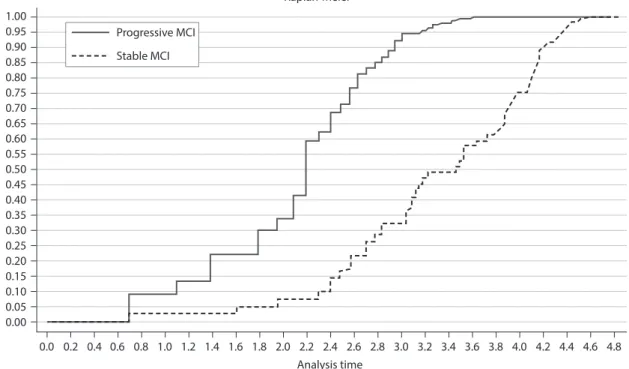Clinical and Demographic Predictors of Conversion to Dementia in Mexican Elderly with Mild Cognitive Impairment
Texto completo
Figure


Documento similar
For adults with normal cognition or mild cognitive impairment, are physical activity interventions more effective than usual care or no intervention in reducing the risk of
Riesco, Hospital del Vendrell, El Vendrell, Tarragona (Spain); Jorge Romero Requena, Hospital Perpetuo Socorro, Badajoz (Spain); José Carlos Arévalo Lorido, Complejo
In patients with mild cognitive impairment (MCI) or dementia treated in memory clinics, 44.7% were taking anticholinergic drugs, with 11.7% receiving a high anticholinergic load
Table VII shows the results of the five tests assessing visual object and visuospatial skills. The cognitively preserved group did not show statistically significant differences
The predictors introduced in the model were: age, prefracture gait independence, cognitive impairment, anesthetic risk, fracture type, operative delay, early postoperative
We found a higher amplitude of regional spontaneous activity in bilinguals compared to 236. monolinguals in the thalamus bilaterally (Fig 2; Table
Thus, the aim of the current study was to assess whether food insecurity is associated with MCI using data from a nationally representative sample of older adults in South
The objectives of this study were to describe the demographic and clinical features, antiretroviral therapy (ART) history, antiviral drug resistance and susceptibility to drugs in